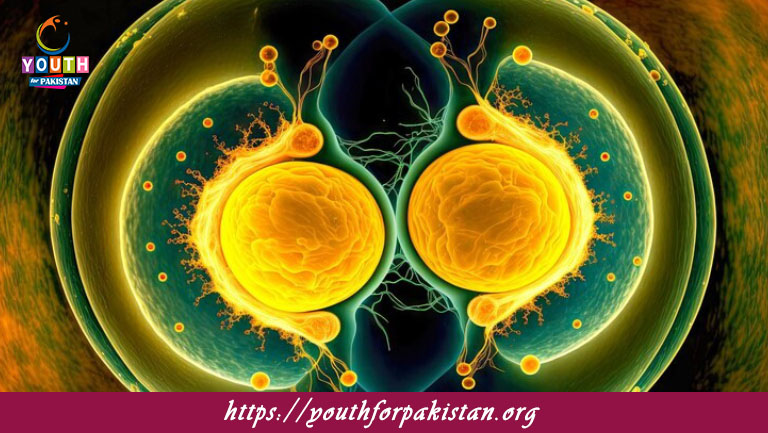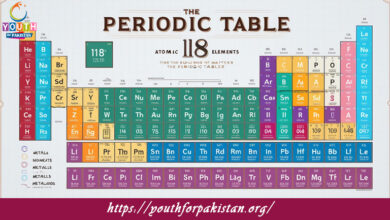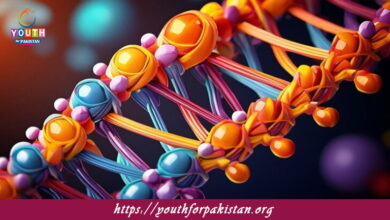Transmission Of Action Potential Between Cells–Synapse MCQs

Transmission Of Action Potential Between Cells–Synapse MCQs: Welcome to the Transmission Of Action Potential Between Cells–Synapse MCQs with Answers. In this post, we have shared Transmission Of Action Potential Between Cells–Synapse Multiple Choice Questions and Answers for PMC MDCAT 2024. Each question in MDCAT Biology offers a chance to enhance your knowledge regarding Transmission Of Action Potential Between Cells–Synapse MCQs in this MDCAT Online Test.
Action potentials are transmitted across synapses via:
a) Direct electrical coupling
b) Chemical messengers
c) Mechanical impulses
d) Light signals
In a chemical synapse, action potentials trigger the release of neurotransmitters from:
a) Postsynaptic membrane
b) Presynaptic vesicles
c) Synaptic cleft
d) Axon hillock
The primary role of neurotransmitters in the synaptic cleft is to:
a) Increase action potential speed
b) Facilitate electrical impulses
c) Transmit signals to the postsynaptic neuron
d) Inhibit signal transmission
Which ion influx is essential for neurotransmitter release at the presynaptic terminal?
a) Sodium
b) Potassium
c) Calcium
d) Chloride
The gap between the presynaptic and postsynaptic neurons is known as the:
a) Axon hillock
b) Synaptic cleft
c) Myelin sheath
d) Node of Ranvier
Neurotransmitters bind to receptors located on the:
a) Axon terminal
b) Synaptic vesicle
c) Postsynaptic membrane
d) Presynaptic vesicle
The removal of neurotransmitters from the synaptic cleft can occur through:
a) Exocytosis
b) Reuptake
c) Endocytosis
d) Osmosis
The process by which neurotransmitters are broken down in the synaptic cleft is called:
a) Reuptake
b) Degradation
c) Diffusion
d) Endocytosis
Which of the following neurotransmitters is involved in muscle contraction at the neuromuscular junction?
a) Dopamine
b) Acetylcholine
c) GABA
d) Serotonin
The enzyme responsible for breaking down acetylcholine in the synaptic cleft is:
a) Monoamine oxidase
b) Acetylcholinesterase
c) Catechol-O-methyltransferase
d) Glutamate decarboxylase
In an action potential, the depolarization phase is primarily caused by:
a) Calcium influx
b) Sodium influx
c) Potassium efflux
d) Chloride influx
Which of the following describes the effect of excitatory neurotransmitters on the postsynaptic neuron?
a) Hyperpolarization
b) Depolarization
c) No change in membrane potential
d) Increased neurotransmitter degradation
The term used for the rapid return to resting membrane potential after an action potential is:
a) Repolarization
b) Hyperpolarization
c) Depolarization
d) Refractory period
In chemical synapses, the action potential causes voltage-gated channels to open, allowing:
a) Sodium ions to leave the cell
b) Potassium ions to enter the cell
c) Calcium ions to enter the cell
d) Chloride ions to leave the cell
The role of neurotransmitter receptors on the postsynaptic membrane is to:
a) Bind neurotransmitters
b) Release neurotransmitters
c) Store neurotransmitters
d) Degrade neurotransmitters
Action potentials are transmitted across the synaptic cleft by:
a) Electrical currents
b) Chemical neurotransmitters
c) Mechanical impulses
d) Direct ion flow
In the synaptic transmission process, the reuptake of neurotransmitters into the presynaptic neuron helps to:
a) Increase neurotransmitter concentration
b) Prevent prolonged stimulation of the postsynaptic neuron
c) Facilitate neurotransmitter degradation
d) Enhance neurotransmitter release
The period during which a neuron cannot generate another action potential is called the:
a) Resting period
b) Refractory period
c) Hyperpolarization period
d) Depolarization phase
Which neurotransmitter is involved in mood regulation and is often targeted by antidepressant medications?
a) Acetylcholine
b) Dopamine
c) Norepinephrine
d) Serotonin
The synaptic vesicles in the presynaptic neuron contain:
a) Neurotransmitters
b) Ions
c) Receptors
d) Enzymes
The main role of the synaptic cleft is to:
a) Facilitate direct electrical connection between neurons
b) Prevent neurotransmitter binding
c) Allow diffusion of neurotransmitters
d) Store neurotransmitters
Which of the following best describes the process by which neurotransmitters are released from vesicles?
a) Endocytosis
b) Exocytosis
c) Osmosis
d) Phagocytosis
The binding of neurotransmitters to postsynaptic receptors can lead to:
a) Decreased action potential frequency
b) Increased action potential frequency
c) No change in action potential frequency
d) Direct neurotransmitter degradation
Which process involves the reuptake of neurotransmitters into the presynaptic neuron?
a) Diffusion
b) Degradation
c) Endocytosis
d) Reuptake
The neurotransmitter that inhibits the postsynaptic neuron and prevents action potentials is:
a) Glutamate
b) Acetylcholine
c) Dopamine
d) GABA
The action potential triggers neurotransmitter release by:
a) Depolarizing the presynaptic membrane
b) Hyperpolarizing the presynaptic membrane
c) Increasing neurotransmitter reuptake
d) Decreasing ion channel permeability
Which of the following neurotransmitters is primarily associated with pain modulation and mood regulation?
a) Acetylcholine
b) Norepinephrine
c) Serotonin
d) Dopamine
The process by which neurotransmitters are removed from the synaptic cleft involves:
a) Vesicle recycling
b) Enzymatic degradation
c) Direct uptake by postsynaptic neurons
d) Passive diffusion
The action potential traveling along an axon is propagated by:
a) Receptor activation
b) Ion channel opening
c) Neurotransmitter release
d) Synaptic cleft diffusion
Which of the following is not a common neurotransmitter?
a) Glutamate
b) Acetylcholine
c) Insulin
d) Norepinephrine
The effect of a neurotransmitter on the postsynaptic cell depends on:
a) Its concentration in the synaptic cleft
b) The type of neurotransmitter receptor it binds to
c) Its degradation rate
d) Its rate of release
During the depolarization phase of an action potential, the membrane potential becomes:
a) More negative
b) More positive
c) Unchanged
d) Completely zero
The presynaptic neuron’s action potential results in:
a) Neurotransmitter reuptake
b) Neurotransmitter release into the synaptic cleft
c) Direct activation of postsynaptic receptors
d) Inhibition of postsynaptic receptors
Which neurotransmitter is primarily involved in learning and memory?
a) GABA
b) Dopamine
c) Acetylcholine
d) Serotonin
The rapid recovery of the neuron to its resting state after an action potential is known as:
a) Repolarization
b) Hyperpolarization
c) Depolarization
d) Resting phase
Neurotransmitter release is triggered by:
a) Increased potassium concentration
b) Decreased sodium concentration
c) Increased calcium concentration
d) Decreased calcium concentration
Which ion channel opens in response to an action potential at the presynaptic terminal?
a) Sodium
b) Potassium
c) Calcium
d) Chloride
The neurotransmitter that primarily promotes excitatory responses in the central nervous system is:
a) GABA
b) Glutamate
c) Dopamine
d) Acetylcholine
In a synapse, the signal is terminated by:
a) Direct ion flow
b) Reuptake or degradation of neurotransmitters
c) Continued neurotransmitter release
d) Increased calcium concentration
The action potential is propagated along the axon by:
a) Neurotransmitter diffusion
b) Receptor activation
c) Ion channel opening and closing
d) Synaptic cleft transport
Which neurotransmitter is associated with the “fight or flight” response?
a) Acetylcholine
b) Serotonin
c) Norepinephrine
d) Dopamine
If you are interested to enhance your knowledge regarding Physics, Chemistry, Computer, and Biology please click on the link of each category, you will be redirected to dedicated website for each category.





